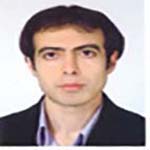Optimizing School Allocation Using Geographic Information Systems and TOPSIS Model(The Case of Tehran Area 18)
Inadequate planning and lack of suitable land have led to suboptimal location of educational facilities in urban areas. Increasing the number of students and limited financial resources, lack of planning, lack of suitable land, not using urban planners and GIS, has led to the optimal location in most educational spaces. This study focuses on district 18 of Tehran, where the distribution of schools is heterogeneous. Using the TOPSIS model in a Geographic Information System (GIS) environment, this study aims to identify suitable locations for future school development. Criteria based on expert opinions and past research were categorized into four groups: compatible, semi-compatible, incompatible, and network of passages. Hierarchical analysis was used to prioritize and weight the criteria. After overlaying limitations and access radius for building schools, a location map was generated, classifying areas as suitable, relatively suitable, medium, relatively unsuitable, and unsuitable. Based on the results, the distance from industrial centers with a value of 0.18 was selected as the most important and the distance from administrative centers with a value of 0.017 as the least important layer. After overlapping the limitations of all uses and the radius of access to the permitted areas for building schools, the location map was selected and 5 floors were classified as suitable, relatively suitable, medium, relatively unsuitable and unsuitable. And the middle floor with an area of 1047766 square meters and 33.25% has the largest share of the area.
-
Tracking Air Pollution Changes Using Sentinel-5P Data in Khuzestan.
Behnaz Ghaderi, Payam Alemi Safaval, Mohammadreza Tabesh, *
Desert, Summer -Autumn 2024 -
Travel time prediction with machine learning: competition of linear regression, multivariate regression, random forest and deep neural network
Zahra Rezaee, *, Mohammadhasan Vahidnia, , Saeed Behzadi
Journal of Geomatics Science and Technology, -
Use of UAVs and Lidar to identify the spatiotemporal elevation changes of AlamKooh Glacier
Sara Sheshangosht, Hossein Agamohammadi *, Nematollah Karimi, , Mohammadhassan Vahidnia
Journal of of Geographical Data (SEPEHR),



